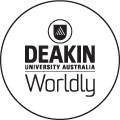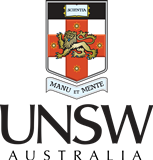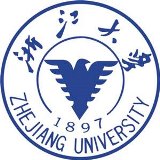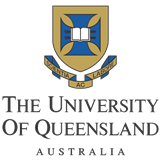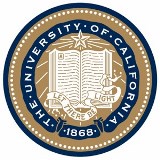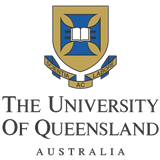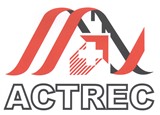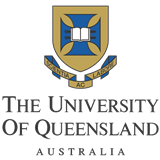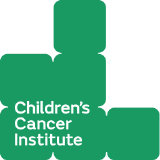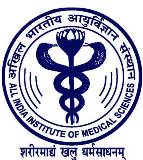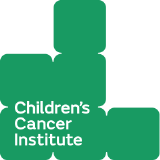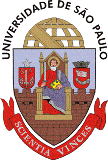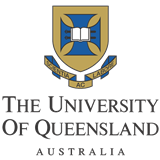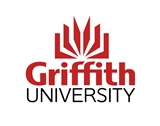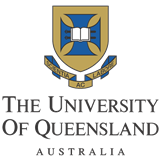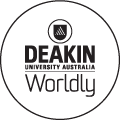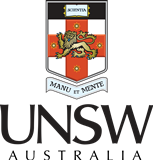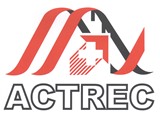Day 3 :
- Track 5: Novel Approaches to Cancer Therapeutics
Track 6: Cancer Therapy and Clinical Cancer Research
Session Introduction
Jagat R Kanwar
Deakin University, Australia
Title: Multifunctional Locked Nucleic Acid Modified Chimeric Survivin Targeted Nano-bullets Against Cancer Stem Cells
Time : 09:00-09:25

Biography:
Jagat Kanwar is group leader and head of the Nanomedicine and Laboratory of Immunology and Molecular Biomedical Research has an international reputation in investigating fundamental and applied molecular aspects of cancer and chronic inflammation. Our nanomedicine laboratory of immunology and molecular biomedical research (NLIMBR) is discovering the novel and safe targeted nanomedicine based nano-nutraceuticals for cancers, autoimmune disorders and inflammatory diseases. We also vested the molecular diagnosis including role of a non-invasive exosomes in blood, inflammatory sites and cancer tissues. Our research focused on cancer and inflammatory autoimmune diseases aims to investigate the underlying mechanisms involved in apoptosis, autophagy and inflammation by targeting the production of cytokines, chemokines, oxygen radicals and matrix metalloproteinase.
Abstract:
Theranostics, the combination of diagnostics and therapies is a new concept in cancer management. Our published work strongly suggests that orally administered multifunctional targeted “nano-bullets†(nanocarriers; NCs) with iron saturated bovine lactoferrin (Fe-bLf) were able to kill tumours. Here for the first time, we are developed multifunctional-targeted nanocapsules conjugated with stably modified aptamers to target and kill cancer as well as cancer stem cells. These nanocapsules labeled with biosensors, will deliver anti-cancer molecules to colon tumours and help to monitor the therapy in real-time imaging. A cell permeable dominant negative mutant form of survivin (dNSurR9C84A), dNSurR9C84A has shown promising anticancer properties by inhibition of survivin and reduces the chance of side effects since survivin is not expressed in normal cells in an adult. However due to short half-life of dNSurR9C84A a drug delivery system based on low molecular weight chitosan was used which could prolong the bioavailability of dNSurR9C84A. These chitosan nanoparticles were well characterized before examining effects on colon cancer cells (Caco-2). The nanoparticle transport studies were carried out both in vitro and ex vivo in order to understand the mechanism of low molecular weight chitosan nanoparticles with intestinal cells. The in vivo Biodistribution studies showed a highly selective and specific patter of uptake of the targeted nanocarriers or “nanobullets†(CHNP-dNSurR9C84A-LNA-Nu+Ep) in the tumour. The targeted nanocarriers were also able to significantly inhibit the tumour volume up to a period of 95 days. These nanobullets showed specific internalization in cancer stem cells and led to cancer stem cells specific apoptosis, thus proved to be appropriate for oral administration in colon cancer
Jeyran Shahbazi
University of New South Wales, Australia
Title: The BET bromodomain inhibitor JQ1 and the histone deacetylase inhibitor panobinostat induce synergistic anticancer effects by repressing LIN28B and N-Myc expression
Time : 09:25-09:50

Biography:
Jeyran Shahbazi is working as a Research Officer at Children's Cancer Institute, Lowy Cancer Research Centre, UNSW. Her research interests include Cell Biology, Cancer Research, Molecular Biology.
Abstract:
Patients with neuro blastoma associated with MYCN oncogene amplification experience a very poor prognosis. BET bromodomain inhibitors are emerging as one of the most promising novel classes of anticancer agents by blocking the BET bromodomain proteins BRD3 and BRD4 from activating transcription of oncogenes such as MYC and MYCN. However, treatment with BET bromodomain inhibitors alone does not result in cancer remission. Here we show that BRD3 and BRD4 directly bound to the LIN28B gene promoter and activated LIN28B gene transcription, and that knocking down LIN28B expression reduced the expression of N-Myc protein, but not N-Myc mRNA. Combination therapy with the BET bromodomain inhibitor JQ1 and the histone deacetylase inhibitor panobinostat synergistically suppressed LIN28B gene expression, reduced N-Myc mRNA expression to the same extent as JQ1 treatment alone, but considerably and synergistically reduced N-Myc protein expression. JQ1 and panobinostat induced synergistic growth inhibition and apoptosis in neuroblastoma cells, but not normal non-malignant cells in vitro. Importantly, in neuroblastoma-bearing mice, JQ1 and panobinostat combination therapy synergistically and considerably reduced N-Myc protein expression in tumor tissues and blocked tumor progression. Our findings have therefore identified a potential strategy to reduce N-Myc onco-protein expression and a novel therapeutic approach for the treatment of aggressive neuroblastoma.
Xi Chen
Zhejiang University, China
Title: Dual inhibition of Cdc7 and Cdk9 by PHA-767491 suppresses hepatocarcinoma synergistically with 5-fluorouracil
Time : 09:50-10:15

Biography:
Xi Chen got her MD degree from Peking University Health Science Center, China and later a PhD degree in Biochemistry from King’s College London, UK. Her Postdoctoral training was received in the University of Pittsburgh, USA. She started working as an Associate Professor in Zhejiang University since 2011. She is also the Deputy Director of the central lab of the Children’s Hospital, Zhejiang University School of Medine. She has published 15 peer-reviewed papers in scientific journals and presented in several international conferences. Her current research interest focuses on the treatment of cancer.
Abstract:
Activation of checkpoint kinase 1 (Chk1) is essential in chemo resistance of hepatocarcinoma (HCC) to5-fluorouracil (5-FU) and other anti metabolite family of drugs. In this study, we demonstrated that PHA-767491, a dual inhibitor of two cell cycle checkpoint kinases, cell division cycle kinase 7 (Cdc7) and cyclin-dependent kinase 9 (Cdk9) has synergistic antitumor effect with 5-FU to suppress human HCC cells both in vitro and in vivo. Compared with the sole use of each agent, PHA-767491 in combination with 5-FU exhibited much stronger cytotoxicity and induced significant apoptosis manifested by remarkably increased caspase 3 activation and poly (ADP-Ribose) polymerase (PARP) fragmentation in two HCC cell lines BEL-7402 and Huh7. PHA-767491 directly counteracted the 5-FU-induced phosphorylation of Chk1, a substrate of Cdc7 and decreased the expression of the anti-apoptotic protein myeloid leukemia cell 1 (Mcl1), a downstream target of Cdk9. In tumor tissues sectioned from nude mice HCC xenografts, administration of PHA-767491 also decreased Chk1 phosphorylation and increased in situ cell apoptosis. Our study suggests that PHA-767491 could enhance the efficacy of 5-FU by inhibiting Chk1 phosphorylation and down-regulating Mcl1 expression through inhibition of Cdc7 and Cdk9, thus combinational administration of PHA-767491 with 5-FU could be potentially beneficial to patients with advanced and resistant HCC.
Jie Tang
University of Queensland, Australia
Title: Controlling the calcium to phosphate ratio in preparation of lipid coated calcium phosphate nanoparticles to enhance gene delivery to breast cancer cells
Time : 10:15-10:40

Biography:
Jie Tang completed her MPhil from West China School of Pharmacy, Sichuan University. She is now studying as a PhD candidate sponsored by Chinese Scholarship Council and UQI scholarship in Australian Institute for Bioengineering and Nanotechnology, the University of Queensland. She has published more than 5 papers in high impact journals in the field of cancer therapy.
Abstract:
Lipid-coated calcium phosphate (LCP) nanoparticles (NPs) remain an attractive option for siRNA systemic delivery for anti-cancer treatment. Previous researchers revealed the influence of the stoichiometry of reactants on the size and morphology of nanostructured calcium phosphate (CaP) particles. There are very few reportson investigating the influence of synthesis parameters such as the Ca/P molar ratio and mixing style on the siRNA loading onto LCP NPs and protection by LCP NPs and subsequent siRNA delivery efficiency. Thus in this research, we examined the effect of Ca/P molar ratio on the size, zeta potential, dispersion and siRNA loading onto LCP NPs and optimized the Ca/P molar ratio in terms of the siRNA loading efficiency and siRNA protection from enzyme degradation. Our data indicated that the particle size and zeta potential of LCP NPs decreased with an increase of the Ca/P molar ratio from 25 to 100 and was maintained at ï¾40 nm and ï¾-20 mV when the ratio was over 100. Interestingly, LCP particles synthesized at a lower Ca/P ratio exhibited higher gene encapsulated efficiency (i.e., higher percentage of gene loaded from reaction solution) and provided more effective protection of siRNA from degradation by serum-derived nucleases but had a decreased gene loading capacity per particle. LCP NPs synthesized at the optimized Ca/P ratio (100) had a hollow, spherical structure with an average size of about 40 nm and were able to maintain their stability in serum containing media and PBS for over 24 hours. Moreover, LCP NPs exhibited a growing dissolution in aqueous solutions with a lower pH value indicating that the siRNA release from LCP NPs is pH sensitive. The superior ability of optimized LCP NPs to maintain the integrity of encapsulated siRNA and the colloidal stability in culture medium of the nanoparticles allow this formulation to achieve improved cellular accumulation of siRNA and enhanced growth inhibition (a two-fold high than OligofectamineTM) of human breast cancer cells in vitro.
David K. Imagawa
University of California, USA
Title: Pilot study comparing the Pharmacokinetics of Sorafenib in the Asian-American population vs. Non-Asian Population in the Treatment of Hepatocellular Carcinoma
Time : 10:40-11:05

Biography:
David K Imagawa is a Professor of Clinical Surgery and Chief in the Division of Hepatobiliary and Pancreas Surgery/Islet Cell Transplantation in the University of California. His research interest are Liver and pancreatic diseases, bile duct and pancreatic tumor resections, bile duct injuries, biliary reconstruction, minimal invasive treatment of advanced liver tumors, laparascopic, ultrasound guided radiofrequency ablation, biliary reconstruction, pathogenesis of chronic rejection, liver cancer, hepatocellular carcinoma, liver tumor, post transplant hyperlipidemia, clinical trials of novel chemotherapeutic agents, Therasphere, Cirtex, Metabasis, gene therapy for immunosuppression, reperfusion injury in transplantation, islet cell transplantation for complicated Diabetes Mellitus Type I, mechanism of immunomodulation, hepatitis screening, organ donation.
Abstract:
Sorafenib is the only FDA approved agent that has been shown to prolong survival in unresectable hepatocellular carcinoma (HCC). The recommended dose is 400mg BID. Our anecdotal experience has shown that the majority of our Asian-American patient populations are unable to tolerate this recommendation. This is a pilot study aimed at evaluating a potential difference in pharmacokinetics (PK) of Sorafenib metabolism between the Asian-American (AA) and Non-Asian (NA) patient population. A cohort of 23 patients completed the study. The PK of Sorafenib and its main metabolite M-2 were analyzed at 0, 1, 2, 4, 9 and 12 hours respectively. A subset analysis comparing high dose (>400mg daily) vs. low dose (≤400mg daily), high body surface area (BSA>1.9) vs. low body surface area (BSA≤1.9) and AA vs. NA patients was preformed. 18 patients were in the low dose cohort with 2 mortalities (749 and 283 days) and 1 patient achieving complete response (201 days). There were no deaths in the high dose group. There were no significant differences in the PK of Sorafenib and M-2 between the high and low dose groups nor the high and low BSA groups. Despite the difference in dose, the mean Sorafenib AUC and Cmax of the low dose group was at least 70% of the high dose group at steady state. Furthermore, the mean Sorafenib AUC and Cmax of the low BSA cohort was at least 75% of the high BSA group at steady state. There were no significant differences in the PK between the AA and NA groups. Our analysis reveals a trend towards comparable PK of Sorafenib and M-2 metabolite despite lower doses and lower BSA. These findings suggest that a lower, more tolerable dose of Sorafenib in AA patients may not compromise drug efficacy. Large, population based studies are needed to validate these findings.
Zhi Ping Xu
University of Queensland, Australia
Title: Using layered double hydroxides nanoparticle conjugated with CpG to polarise immune responses from Th2 to Th1 bias
Time : 11:20-11:45

Biography:
Zhi Ping (Gordon) Xu is an Australian Research Council (ARC) Future Fellow (2013-2016). Since 2004, He has received a number of fellowships and awards, including an ARC Australian Postdoctoral Fellowship (2005-2007), ARC Australian Research Fellowship (2008-2012), and UQ Foundation’s Research Excellence Award (2009). Associate Professor Xu and his colleagues have received funding from the ARC and National Health and Medical Research Council (NHMRC) totalling more than $5 million. Associate Professor Xu is an ARC and NHMRC referee.
Abstract:
Vaccine is one of the promising treatments in cancer therapy. Modulation of immune response is very important in the induction of humoral or cellular immunity, which will affect vaccine efficiency. Here we have tailored an anionic clay nanomaterial to specifically load the model antigen obalbumin (OVA) and the toll-like receptor ligand CpG in combination to modulate the immune response from Th2 bias towards the preferred polarity Th1 for anti-cancer purpose. Alum is a vaccine adjuvant approved for human use by FDA, while it has a severe inflammatory response and cannot modulate the immune response. The anionic clay, MgAl-layered double hydroxide (LDH) nanomaterial, has a similar chemical composition to Alum, but distinct properties. For example, MgAl-LDH nanoparticles can strongly interact with and carry proteins and gene materials for cellular delivery. In this research, using MgAl-LDH to carry OVA induced a comparable antibody response to Alum. In sharp contrast, combination of CpG to LDH-OVA resulted in much higher IgG2a:IgG1 ratio than that in the case of Alum, demonstrating polarisation of the immune response from Th2 towards Th1. Moreover, CpG-OVA-loaded LDH retarded tumour growth in vivo, further confirming LDH-CpG adjuvant activity. Therefore, MgAl-LDH nanomaterial has the great potency to be a vaccine adjuvant for switching Th2 to Th1 dominant immune responses.
Kwok-nam Leung
The Chinese University of Hong Kong, China
Title: Mechanistic studies on the anti-tumor effects of indirubin-3’-oxime on human neuroblastoma cells
Time : 11:45-12:10

Biography:
K.N. Leung graduated with a B.Sc. Degree in Biochemistry (First Class Honors) from The Chinese University of Hong Kong (CUHK) and obtained a Ph.D. Degree in Microbiology and Immunology from the John Curtin School of Medical Research, Australian National University. After two years of postdoctoral work at the Pathology Department of the University of Cambridge, he returned to the CUHK as a Lecturer in the Department of Biochemistry in 1983. K.N. Leung is now a Professor in the School of Life Sciences, CUHK and was appointed as Assistant Dean of the Faculty of Science in 2007, and then Associate Dean (Education) of the Faculty of Science in 2014. He was the chairman of the Hong Kong Society for Immunology from 2000-2002. He has served the Editorial Boards of several international journals and as a peer reviewer for 15 journals. He has over 30 years of experience in teaching and research in Immunology and Cancer Biochemistry. His main research interests include immunopharmacological studies of food components, natural products and Chinese medicinal herbs, cancer immunotherapy, and molecular studies of leukemic cell proliferation, differentiation and apoptosis..
Abstract:
Neuroblastoma is the most common extracranial solid tumor found in infancy and childhood and accounts for ~15% of all childhood cancer-related deaths. Naturally-occurring compounds that can inhibit neuroblastoma cell proliferation or trigger them to undergo apoptosis have attracted increasing interest as an alternative therapy for human neuroblatoma. Indirubin-3’-oxime (I3M), an indigo alkaloid, was found to exhibit potent anti-tumor activities on various types of cancer cells. However, its modulatory effects on human neuroblastoma and the underlying mechanisms remain poorly understood. Our results showed that I3M inhibited the growth of the human neuroblastoma LA-N-1, SH-SY5Y and SK-N-DZ cells in a concentration- and time-dependent manner with minimal cytotoxicity on normal cells. Mechanistic studies showed that I3M specifically decreased the expression of mitochondrial regulators ERRï§ and PGC-1ï¢ and resulted in decreased mitochondrial mass and mitochondrial membrane potential in LA-N-1 cells. I3M also increased the level of CDK inhibitor p27Kip1 and reduced the levels of CDK2 and cyclin E in LA-N-1 cells, leading to cell cycle arrest at the G0/G1 phase. Studies on the anti-angiogenic activities showed that I3M inhibited the in vitro proliferation, migration, and tube formation of the human microvascular endothelial HMEC-1 cells in a concentration-dependent manner and significantly suppressed the in vivo angiogenesis in Matrigel plugs in mice. Moreover, I3M also down-regulated the expression of Ang-1 and MMP2 genes and up-regulated the expression of Ang-2 gene in HMEC-1 cells. Collectively, our results indicate that I3M might exert its anti-tumor activity by causing mitochondrial dysfunction which led to cell cycle arrest in LA-N-1 cells or through expression of its anti-angiogenic activities. Therefore, I3M might be exploited as a potential therapeutic candidate for the treatment of some forms of human neuroblastomas
Madhura G Kelkar
Advanced Centre for Treatment Research and Education in Cancer, India
Title: Inverse regulatory role of p53 modulating human sodium iodide symporter gene expression in breast cancer
Time : 12:10-12:35

Biography:
Madhura G Kelkar has completed her Master’s degree in Life Sciences from Mumbai University. She has cleared national level entrance exams including GATE and CSIR-UGC-NET. Currently, she is enrolled to Homi Bhabha National Institute (HBNI) for the Doctorate study. During her PhD course, she has published papers in peer-reviewed reputed journals like Current Opinion in Pharmacology and Cell. She had also attended national and international conferences
Abstract:
Human Sodium Iodide Symporter mediated (NIS) radio iodide accumulation is the basis of effective targeted radio iodide therapy in differentiated thyroid cancers. NIS is aberrantly expressed in majority of the breast cancer (BC) subtypes although its relevance and regulation is poorly understood. To get an insight on NIS transcriptional regulation, we have identified the presence of three putative regulatory p53-binding sites on full-length human NIS promoter by genome wide in silico analysis. Since p53 mutations in BC are frequently observed, we have investigated the role of p53 in NIS regulation. Over expression of wild type p53 as a transgene or activation of endogenous p53 by doxorubicin (DR) treatment in BC cell lines results in significant reduction of promoter activity. Further the siRNA-mediated p53 knockdown effect shows reversal on reduced transcript (p<0.005). Abrogation of p53 binding sites by site directed mutagenesis also results in significant increase in promoter activity (p<0.05) indicating NIS-promoter repression is p53-dependent. Further, direct binding of p53 to human NIS promoter is also confirmed by chromatin immunoprecipitation analysis. As a result of endogenous p53 activation by DR, cellular NIS protein content is also reduced and thus impacting NIS-mediated iodide uptake significantly (p<0.05). Further, DR drug effect is validated in breast cancer xenograft model by optical bioluminescence imaging. This study provides novel information revealing complete biochemical and functional basis to show that human NIS is a direct target of p53 in BC cells. Our study opens up a scope for establishing link between aberrant NIS expression and p53 mutations in BC patients.
Yanheng Wu
University of Queensland, Australia
Title: Layered double hydroxide (LDH) nanoparticles are developed as highly efficient siRNAs carriers
Time : 12:35-13:00

Biography:
Yanheng Wu is a recipient of UQ international PhD scholarship at the Australian Institute of Bioengineering and Nanotechnology of the University of Queensland.
Abstract:
RNA interference (RNAi) is mediated by small RNAs including small interfering RNAs (siRNAs) that direct the sequence-specific degradation of the target mRNA, making it a powerful tool for the treatment of various genetic disorders, viral infections and cancers. One of the major impediments to the clinical application of RNAi-based therapy is the need to deliver these molecules into targeted cells. Although a variety of packaging particles are currently under development as siRNA delivery systems, application of these technologies has been hindered by their high cytotoxicity, low drug loading capacity, inefficient release in cells and poor ability to penetrate cell membranes. Layered double hydroxide (LDH) nanoparticles, a family of anionic clay materials are now emerging as a potential new gene delivery system as they exhibit low cytotoxicity and high biocompatibility. In this study, we prepared LDH nanoparticles with the average particle size of 110 nm and investigated the loading capacity of oligo dsDNA (a mimic of siRNA) by LDH nanoparticles at the dsDNA:LDH mass ratios from 1:1 to 1:40. We further examined the LDH-mediated siRNA delivery to nasopharyngeal cancer cell line CNE2. In particular, we showed the effect of the dsDNA:LDH mass ratio on the dsDNA delivery efficiency to the cells. We found that the cell line took up the most dsDNA via the LDH nanoparticles at the dsDNA:LDH mass ratio between 1:10 and 1:30. The optimized mass ratio is probably resulted from the tradeoff between the loading amount and the carrier dose effect. We finally demonstrated that the use of the optimized ratio to deliver functional siRNA to treat cancer cells (CNE2) was highly efficient. This work proves convincing evidence that LDH nanoparticles can be used as an efficient siRNA delivery vector.
Tan Shian Ming
Singapore General Hospital, Singapore
Title: Psychiatric illness in the cancer patient
Time : 13:00-13:25

Biography:
Tan Shian Ming completed his MBBS in 2003 from National University of Singapore and attained his Masters of Medicine (Psychiatry) Postgraduate degree in 2013. He is currently an Associate Consultant Psychiatrist in Singapore General Hospital, a tertiary hospital with a designated oncology center. He has published papers on psycho-oncology and had previously presented in local and international conferences.
Abstract:
Despite the advances in medical treatment, receiving a diagnosis of cancer conjures up in many, the spectre of morbidity and mortality. Often viewed as a death sentence, grappling with the challenges of living with cancer sits uncomfortably in most individuals and evokes a vast range of overwhelming emotions. These psychological responses may sometimes manifest as depression and anxiety disorders; conditions that oncologists may not be confident in addressing. This oral presentation gives an overview of the common psychiatric conditions arising in oncology patients including clinical presentation and general management considerations. At the same time, it provides insight to the challenges in determining the fine line that separates psychiatric illness from normal psychological reactions in oncology patients and suggests answers to mitigate this conundrum.
- Track 7: Socio-Economic impact of Cancer
Session Introduction
Mary McGowan
Chidlrens Cancer Centre, Australia
Title: Psychosocial, emotional and financial implications of cancer
Time : 10:15-10:40
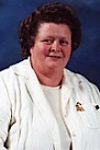
Biography:
Mary McGowan is a Community Liaison Manager in the Childrens Cancer Centre at the Royal Children's Hospital Melbourne.
Abstract:
220 children under the age of 18 are diagnosed with childhood cancer annually in Victoria. The diagnosis of cancer in a child is devastating with far-reaching psychosocial, emotional and financial implications for not just the child but also the family system as a whole. Due to an increased survival rate of 82% more and more is being learned about the long term impact of this disease. Some of these former families have the need to meet current families experiencing similar experiences and/or want to give something back to patients, families and treatment centres. The No 2 standard of the Australian Health Services Accreditation Standards is “Consumers Engagement†In 2002 the Children’s Cancer Centre Parent Advisory Group (PAG) was established. Parents and staff from the unit form the membership of this group and work together to improve the overall outcomes for our families. However, it should be borne in mind prior to starting a PAG, that the necessary infrastructure should exist within the organisation in order to support the successful management of a volunteer programme. There are several key elements to address when developing a PAG what motivates people to volunteer; identifying and recruiting volunteers, screening, selection and training and most importantly, retention and recognition. The management and empowerment of volunteers through providing regular support, supervision and on-going evaluation is essential to protect both the beneficiary and the volunteer. This presentation will go through the development, the growth and achievements as well as the pit falls of PAG.
Barbara Wood
Boob buddies Inc, Australia
Title: A holistic approach to palliation: Incorporating gratis in-home oncology psychotherapeutic support
Time : 11:45-12:10

Biography:
Through an eclectic use of therapeutic modalities Barb Wood is committed to empowering children and adults with a life-limiting illness, and their families, through truth, love, and laughter. During the most vulnerable chapter of their lives she brings empathy, respect, humility, and gratitude to the therapeutic relationship. As an Oncology Psychotherapist Barb also places great emphasis on the Gestalt modality with the focus on the importance of the here and now the I and Thou and the what and how.
Abstract:
There appears to be general consensus in available literature that care for patients with life-limiting illnesses is suboptimal and that research addressing the need of this population is limited. One such need which does not appear to be addressed in literature is the incorporation of gratis in-home oncology psychotherapeutic support to address the unmet financial, psychological and psychosocial needs of this population. This discussion examines the usefulness of gratis in-home oncology psychotherapeutic support for children and adults with a life-limiting illness: A population in a period of increased vulnerability who would benefit from gratis in-home oncology psychotherapeutic support. McCorkie et al. (2000) suggest that this in turn could have a profound effect on not only their quality of life but also their longevity. As has been elucidated above, research addressing the need of this population is limited hence a portion of this discussion will be based on personal experiences as an Oncology Psychotherapist. Over many years it has become increasingly evident to me that regardless of age, gender, race or ethnicity there are many common threads linking people in the palliative stage. Threats including but not limited to financial debilitation and emotional distresses such as; fear, disempowerment, depression and anxiety. In relation to financial debilitation Finkelstein et al. (2009) suggest that individuals diagnosed with cancer are not only burdened with poor health, they are also burdened with high out-of-pocket medical expenses, the probability of being unemployed and loss of income due to the illness. These findings support the need for gratis in-home psychotherapeutic support. When addressing the issue of emotional distresses Lazenby (2014) states that 40% of patients with cancer report distress and over 8% of patients with cancer report serious psychosocial distress. Hence, as an Oncology Psychotherapist I decided to make a difference in the lives of children and adults in the palliative stage of their illness by establishing a not-for-profit charitable organization known as boob buddies Inc. Through an eclectic use of therapeutic modalities, I am committed to empowering children and adults in this population and their families, through truth, love and laughter. During the most vulnerable chapter of their lives I bring empathy, respect, humility and gratitude to the therapeutic relationship. Embedded within this relationship is an acknowledgement of the philosophical beliefs of Existential Phenomenology which profess that there are ‘givens’ in life from which we cannot escape. As an Oncology Psychotherapist I also place great emphasis on the Gestalt modality with the focus on the importance of ‘the here and now’ ‘the I and Thou and the what and how. Nonetheless it is apparent that the holistic approach to palliation incorporating gratis in-home oncology psychotherapeutic support is a need which up to date has not been addressed as a service which would be invaluable to this population.
Sobia Bilal
Deakin University
Title: Measuring health-related quality of life impacts among head and neck cancer patients of a developing country
Time : 09:50-10:15

Biography:
Sobia Bilal is a lecturer in the School of Dentistry at the International Medical University, Kuala Lumpur, Malaysia.
Abstract:
Health-related quality of life (HRQoL) information can provide useful prognostic and treatment decision-making information for head and neck cancer patients. This cross-sectional study aimed to assess the impact of head and neck cancer and its treatment on the HRQoL of Pakistani head and neck cancer patients. The Functional Assessment of Cancer Therapy -Head and Neck (FACT-H&N)-V4 in Urdu language was administered using face-to-face interviews among a consecutive clinical convenience sample of 361 head and neck cancer patients in three identified tertiary care settings in Karachi, Pakistan. Socio-demographic details were obtained from patients whereas clinical details were extracted from their medical records. The correlations between the factors (socio-demographic and clinical) and the FACT summary scales were statistically analyzed with 'general linear modeling' (GLM) using 'multivariate analysis of variance (MANOVA)'. Overall poor to moderate HRQoL was noted among the sample group. Highest negative impact noted for Emotional-well-being domain whereas least impact was noticed for Social-well-being. A significant gradient showed higher scores for patients with small tumors (0-2cms), oral cavity tumors, early stage tumors (I &II) and those under pre-treatment phase; whereas lowest scores were noted for those patients with large tumors (>6cms), laryngeal/pharyngeal tumor, SCC, late stage tumors (III & IV), and in the on-going treatment status and palliative care group. This study reports significant impact of head and neck cancer and its treatment on Pakistani patients. Physicians and surgeons in developing countries should be cognizant of the importance these factors in the HrQOL of their patients.
- Track 7: Socio-Economic impact of Cancer
Session Introduction
Rima Dada
All India Institute of Medical Sciences, India
Title: Loss of Sperm DNA Integrity and Childhood Cancer
Time : 09:00-09:25

Biography:
Rima Dada is Professor at AIIMS, New Delhi and Director Lab for Molecular Reproduction and Genetics. Dr Dada did MD and Phd in Medical Genetics. She has several national and international awards to her credit and has published over 100 articles in indexed journals of high impact and written over 65 chapters in books.She is on editorial board of several journals and her field of interest is understanding the role of genetic factors and oxidative stress in infertility and RSA and the impact of lifestyle intervention- meditation /yoga on sperm DNA quality
Abstract:
Sperm is highly vulnerable to oxidative damage to both nuclear and mitochondrial DNA due to minimal cytosolic anti-oxidants and deficient DNA damage repair mechanism. Recent studies have shown that there is increased incidence of children with Retinoblastoma (Rb) in children conceived by ART and in cases where fathers smoke. This study was planned to analyze the sperm DNA quality in fathers of children with non familial Rb (NFRb).A total of 75 fathers of children with NFRb and 75 fathers of healthy children were recruited for the study. Semen samples were collected and normal semen parameters analyzed. Markers for Sperm DNA damage calculated as DNA fragmentation index (DFI), 8-hydroxy-2'-deoxyguanosine (8-OHdG) and Reactive Oxygen Species (ROS) levels were analysed.The fathers underwent 6 months intervention of yoga and meditation. In the fathers of RB, the seminal mean ROS levels were significantly higher (36.086±1.83 vs 20.51±2.71 RLU/s/million; p<0.05) than in controls. here was a significant increase in mean DFI levels (31.50±6.67 vs 21.9±9.4; p<0.001) and the levels of 8-OHdG levels (66.02±2.91 vs 23.10±2.71 pg/ml) were significantly higher (p<0.05) in fathers of Rb cases vs controls. Only 24 cases underwent 6 month practice of meditation/yoga and these cases showed significant decline in all 3 parameters. Oxidative damage to sperm DNA may be the aetiology of Rb as oxidized mutagenic DNA adducts persist even after fertilization. There was significant improvement in DNA integrity following practice of meditation/yoga and this may reduce incidence of childhood morbidity and even cancer.
Sobia Bilal
International Medical University, Malaysia
Title: Measuring health-related quality of life impacts among head and neck cancer patients of a developing country
Time : 09:25-09:50

Biography:
Sobia Bilal, BDS, MSc, PhD, who graduated from Baqai Medical University, Pakistan, practices at International Medical University, Malaysia. She has an MSc degree in Dental Public Health from the University of London and a PhD in Dental Public Health from the University of Malaya, Malaysia. Her areas of research interests include Quality of Life of H&N Cancers, Oral Health Promotion, Tobacco cessation and qualitative research paradigm
Abstract:
Health-related quality of life (HRQoL) information can provide useful prognostic and treatment decision-making information for head and neck cancer patients. This cross-sectional study aimed to assess the impact of head and neck cancer and its treatment on the HRQoL of Pakistani head and neck cancer patients. The Functional Assessment of Cancer Therapy -Head and Neck (FACT-H&N)-V4 in Urdu language was administered using face-to-face interviews among a consecutive clinical convenience sample of 361 head and neck cancer patients in three identified tertiary care settings in Karachi, Pakistan. Socio-demographic details were obtained from patients whereas clinical details were extracted from their medical records. The correlations between the factors (socio-demographic and clinical) and the FACT summary scales were statistically analyzed with 'general linear modeling' (GLM) using 'multivariate analysis of variance (MANOVA)'. Overall poor to moderate HRQoL was noted among the sample group. Highest negative impact noted for Emotional-well-being domain whereas least impact was noticed for Social-well-being. A significant gradient showed higher scores for patients with small tumors (0-2cms), oral cavity tumors, early stage tumors (I &II) and those under pre-treatment phase; whereas lowest scores were noted for those patients with large tumors (>6cms), laryngeal/pharyngeal tumor, SCC, late stage tumors (III & IV), and in the on-going treatment status and palliative care group. This study reports significant impact of head and neck cancer and its treatment on Pakistani patients. Physicians and surgeons in developing countries should be cognizant of the importance these factors in the HrQOL of their patients. - See more at: http://cancer.global-summit.com/asia-pacific/scientific-program.php?day=1&sid=996&date=2015-07-20#sthash.xeX7yfjm.dpuf
Mary McGowan
Chidlren's Cancer Centre, Australia
Title: The Development and Growth of a Cancer Centre Parent Advisory Group
Time : 09:50-10:15
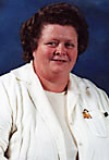
Biography:
Mary worked as Nursing Unit Manager of the Cancer Centre for 25 years and now in her current role of Community Liaison Manger for 12 years. She obtained her Post-Grad Dip in Oncology from Latrobe University in 1991. She was a founding member of the Oncology Nurses Special Interest Group in the 1980’s and is a member of many Philanthropic and support groups for Childhood Cancer. She has presented at both national and international nursing and parent conferences. She is the current Oceanic representative for Childhood cancer International.
Abstract:
220 children under the age of 18 are diagnosed with childhood cancer annually in Victoria. The diagnosis of cancer in a child is devastating with far-reaching psychosocial, emotional and financial implications for not just the child but also the family system as a whole. Due to an increased survival rate of 82% more and more is being learned about the long term impact of this disease. Some of these former families have the need to meet current families experiencing similar experiences and/or want to give something back to patients, families and treatment centres. The No 2 standard of the Australian Health Services Accreditation Standards is “Consumers Engagement†In 2002 the Children’s Cancer Centre Parent Advisory Group (PAG) was established. Parents and staff from the unit form the membership of this group and work together to improve the overall outcomes for our families. However, it should be borne in mind prior to starting a PAG, that the necessary infrastructure should exist within the organisation in order to support the successful management of a volunteer programme. There are several key elements to address when developing a PAG what motivates people to volunteer; identifying and recruiting volunteers, screening, selection and training and most importantly, retention and recognition. The management and empowerment of volunteers through providing regular support, supervision and on-going evaluation is essential to protect both the beneficiary and the volunteer. This presentation will go through the development, the growth and achievements as well as the pit falls of PAG.
Guoxiang Liu
Harbin Medical University, China
Title: Cost-effectiveness of colorectal cancer screening protocols in urban Chinese populations
Time : 10:30-10:55

Biography:
Guoxiang Liu is a Professor and Director of Department of Health Economics at Harbin Medical University (HMU). He has completed his PhD at the HMU and has published over 32 papers in reputable journals since 2008. He is a national expert and Consultant in the field of National Health Account preventing and controlling cancer, payment method in health insurance, health financing and economical operation management Scheme in public hospital. Additionally, he is also a Member of the Editorial Board for the Journal of Chinese Health Economics and the Journal of Chinese Health Resources
Abstract:
CRC takes a second and fourth position in the incidence and mortality lists respectively among all malignant tumors in urban populations in China. Effective early detection and prevention of Colorectal Cancer (CRC) were successfully achieved and confirmed by large-scale randomized controlled trials of CRC screening. The project “Comparison and Evaluation of Screening Programs for Colorectal Cancer in Urban Communities in China†(CESP) was undertaken from July 2006 to December 2008 in China. Based on the CESP project, this study was designed to evaluate the cost-effectiveness of two different CRC screening protocols: Fecal occult blood test (FOBT) alone and FOBT plus a high-risk factor questionnaire (HRFQ) as the respective initial screens followed by colonoscopy. We developed a Markov model to simulate the progression of a cohort of 100,000 average risk asymptomatic individuals moving through a defined series of states between the ages of 40 to 74 years. The study revealed that a combined use of FOBT and HRFQ is preferable in CRC screening programs as an initial screening instrument. Annual FOBT+HRFQ screening is recommended for those who have a negative initial result and those who have a positive result but have failed to continue to colonoscopic examination. Repeated colonoscopy (for those with a negative colonoscopy result) should be performed at a ten-year interval instead of one-year. Such a protocol would cost 7732 Yuan per life year saved which is the most cost-effective option. These results provide helpful experiences and references for current national CRC screening projects in China.
Gisele Monteiro de Souza
University of Sao Paulo, Brazil
Title: Characterization and protein engineering of L-asparaginase 1 from Saccharomyces cerevisiae to evaluate its use as biopharmaceutical
Time : 10:55-11:20

Biography:
Gisele Monteiro de Souza has completed her Ph.D at the age of 27 years from University de São Paulo and postdoctoral studies from the same University. Now, she is professor of Pharmaceutical Biotechnology at Faculty of Pharmaceutical Sciences (FCF/USP) andthe vice-coordinator of the Graduate Course in Biochemical-Pharmaceutical Technology. She has published more than 20 papers in reputed journals and serving as an associate editor of Brazilian Journal of Microbiology. She has received 10 scientific awards, including internationals. The main scientific interest is the study of molecular targets involved in cell response to antitumor drugs and the engineering of proteins used as biopharmaceuticals, such as asparaginase.
Abstract:
Acute lymphoblastic leukemia (ALL) is the most common neoplasia in children. The leukemic cells depend on the presence of L-asparagine (Asn) in the bloodstream for protein synthesis and cell proliferation. L-asparaginase (ASNase) is an important anticancer biopharmaceutical in the treatment of the disease, since it hydrolyzes Asn resulting in ammonia and aspartic acid preventing tumor cells of using such amino acid for protein synthesis leading to apoptotic cell death. ASNase is currently obtained from Escherichia coli and Erwinia chrysanthemi and both formulations are associated with a high rate of adverse effects mainly drug resistance and severe hypersensitivity which undermine the progress and effectiveness of the treatment. The yeast Saccharomyces cerevisiae has the gene ASP1 responsible for the production of L-asparaginase 1 (ScASNase1) that possesses high similarity in amino acids sequence with the bacterial enzymes used as biopharmaceutical. However, there are few studies about ASNase produced by S. cerevisiae. Thus, this work aims to verify the catalytic efficiency of ScASNase1 to characterize the catalytic site and perform site directed mutagenesis to improve the kinetic parameters and compare them with bacterial ones to assess whether ScASNase1 may represent an interesting therapeutic alternative in the treatment of ALL. The ScASNase1 was isolated from the S. cerevisiae genomic DNA and cloned into NdeI and BamHI restriction sites of pET15b expression vector which was cloned in E. coli (BL21 (DE3)) for protein expression. The proteins were purified by metal affinity chromatography.The specific activities and kinetic parameters were obtained using the Nessler's reagent (Merck) colorimetric method for identification of ammonia. The ScASNase1 showed an specific activity of 330 U/mg, K0, 5=8, 9 mM with a Hill coefficient value of 2.005 indicating positive co-operativity of the enzyme with substrate and catalytic efficiency of 4×104 M-1. The reactions of site directed mutagenesis at residues of predicted catalytic site (T64A, T141A, K215A and Y78A) and at residues S301N, A331D, ΔG77, Y243S and K335E supposed to improve kinetic parameters were performed using the kit QuickChange® (Agilent Technologies). The proteins with mutations T64A, T141A, K215A and Y78A showed 99% loss of activity compared to wild type. The ScASNase1was characterized in relation to cytotoxic effect in leukemia cells MOLT-4 and presented antitumor activity. The isoforms S301N, A331D, ΔG77, Y243S and K335E were obtained and will be expressed to the determination of their kinetic parameters compared with the wild type and the bacterial enzymes. Our results suggest that ScASNase1 shows allosteric feature and considering the catalytic efficiency and specific activity, it seems to be promising as biopharmaceutical.
Sumit Siddharth
KIIT University, India
Title: Induction of apoptosis by 4-(3-(tert-butylamino) imidazo [1, 2-α] pyridine-2-yl) benzoic acid in breast cancer cells via up-regulation of PTEN
Time : 11:20-11:45

Biography:
Sumit Siddharth is a senior PhD scholar continuing his work on Cancer Biology at KIIT University, India. His research is mainly focused on exploring the link between metastasis and cancer stem cells. He has studied the anti-cancer and anti-metastatic potentiality of several bioactive as well as chemically synthesized small molecule inhibitors (SMI) in breast cancer model system. He has published 12 papers in reputed peer-reviewed journals and has been awarded as “Senior Research Fellow†from Indian Council of Medical Research
Abstract:
We have previously reported that 4-(3-(tert-butylamino) imidazo [1, 2-α] pyridine-2-yl) benzoic acid, a bicyclic N-fused amino imidazoles derivative (BNFA-D), possesses anti-cancer potentiality against breast and kidney cancer cells with minimal toxicities to corresponding normal cells. Here, we explored the mechanism of action of BNFA-D in breast cancer cells using multiple cell-based assays such as MTT, DAPI, FACS, Western blot and immunoprecipitation. BNFA-D caused apoptosis by up-regulating PTEN leading to inhibition of Wnt/TCF signaling cascade and arresting S phase in breast cancer cells. Expression levels of β-catenin, cyclin D1, C-MYC, and phospho-AKT (Ser (473)) decreased with simultaneous increase in the levels of GSK3β, CK1, and PTEN in BNFA-D-treated MCF-7 cells. Interestingly, silencing of PTEN in breast cancer cells reversed the phenomenon of Wnt/TCF signaling cascade inhibition after BNFA-D treatment.
Harsha Kumar
Manipal University, India
Title: A cross-sectional study on the use of complementary and alternative medicine (CAM) by cancer patients in a tertiary care hospital
Time : 11:45-12:10

Biography:
Harsha Kumar H N is an Associate Professor in the Department of Community Medicine, KMC Mangalore. He teaches Community Medicine.
Abstract:
Background: Use of Complimentary & Alternative Medicine (CAM) by cancer patients has increased across the world. Not much about use of CAM in India is known. So this study was undertaken.
Objectives: To know the proportion of cancer patients using CAM attending a tertiary care centre, to know the patterns of usage of CAM amongst these patients and to know the reasons and perceptions which made them use CAM
Materials & Methods: This is an interview based cross sectional study conducted among cancer patients being treated in tertiary care hospital. The patients were interviewed to know the usage patterns, reasons and perceptions behind the use of CAM. The interview schedules were analyzed using SPSS Version 10. Chi-square test was used to know the association between independent variables with CAM usage. P <0.05 was considered significant.
Results: About 33.8% of the patients used one or more types of CAM. Ayurveda was the most common (50%) of the CAM tried by the patients. The predominant reason for use was as an adjuvant for allopathy (50%). Newly diagnosed cancer patients tend to try CAM more than those who are on treatment for more than a year (p<0.05). Majority of them did not inform their doctors about CAM usage.
Conclusion: The usage of CAM could be higher than reported. If patients are satisfied with allopathy then CAM is used only as an adjuvant. Doctors should make an attempt to know as most of the patients would not disclose the usage of CAM.
- Track 1: Cancer Cell Biology and Biomarkers
Track 2: Advances in Cancer Detection, Imaging, Management and Prevention
Session Introduction
Pascal H G Duijf
University of Queensland, Australia
Title: Chromosome instability in cancer: Mechanisms and therapeutic consequences
Time : 10:45-11:10

Biography:
Duijf obtained a PhD degree in Human Genetics from the Radboud University Nijmegen in the Netherlands. His postdoctoral studies at Memorial Sloan-Kettering Cancer Center in New York, NY, USA focused on how chromosome instability, the missegregation of chromosomes during cell division, contributes to cancer development and progression. In 2013, Dr Duijf established his independent research group at the University of Queensland Diamantina Institute and the Translational Research Institute in Brisbane, Australia. With an interest in breast and other cancers, his group studies chromosome instability in mouse models in order to develop new strategies to improve cancer diagnosis and treatment.
Abstract:
Cancer cells frequently missegregate chromosomes during cell division. This phenomenon termed chromosome instability leads to the formation of aneuploid cells i.e., cells with abnormal chromosome numbers. Chromosome instability is among the most malignant features of cancer cells because it can initiate cancer development, it accelerates cancer progression and it is an important mechanism for cancer cells to become resistant to cancer therapies. Even though more than a century has passed since we learned that chromosome instability is a common trait of tumor cells, we are now only beginning to understand how cancer cells become aneuploid. Work from our and other laboratories has provided important new insights into the molecular and cellular mechanisms of chromosome instability. Here, we will provide an overview of these mechanisms. We will also discuss the consequences of chromosome instability on the cellular and organismal levels as well as the profound impact of chromosome instability on the diagnosis and treatment of cancer.
Devathri Nanayakkara
Griffith University, Australia
Title: Context specific role of deubiquitylase enzyme, USP9X in oral squamous cell carcinoma
Time : 11:10-11:35

Biography:
Devathri Nanayakkara is a final year PhD student from Eskitis Institute for Drug Discovery, Griffith University. She is working on the deubiquitylating enzyme, USP9X under the supervision of Dr Stephen Wood.
Abstract:
Oral squamous cell carcinoma (OSCC) represents one of the most common cancers in the world. Identification of oncogenes, onco-suppressors and their molecular mechanisms is necessary to understand the process of oral tumorigenesis. Recently, deubiquitylase enzyme, USP9X, has been implicated as a tumor suppressor in oral carcinomas. This study aimed to further investigate USP9X’s role by knocking it down in four OSCC cell lines: SCC15, CAL27, FaDu and Detroit 562. Over 6 days all four cell lines displayed a reduction in cell numbers in the absence of USP9X and two of the cell lines, CAL27 and FaDu, revealed cell cycle alterations. USP9X regulates the mTOR pathway which plays a critical role in cell cycle progression. CAL27 and FaDu showed significant down regulation of the mTORC1 target, pS6 protein, in the absence of USP9X, probably causing the delay in cell cycle progression and decrease in cell numbers. In the other two cell lines, SCC15 and Detroit 562, differences in cell numbers were evident only after four days in culture. To determine if the delayed effect is due to terminal differentiation, levels of involucrin were assessed but no difference was observed. Interestingly, levels of MCL1, a pro survival protein and a USP9X substrate decreased in these cells after the fourth day. Hence the reduced cell numbers could be due to increased cell death. This study reveals that the absence of USP9X affects the proliferation/viability of OSCC cell lines. As previously shown, the roles of USP9X can be highly context specific and vary in early and advanced forms of oral cancers.
Kazuhiro Kaneko
National Cancer Center Hospital East, Japan
Title: Hypoxia imaging endoscopy equipped with laser light source
Time : 11:35-12:00

Biography:
Kazuhiro Kaneko is working at National Cancer Center Hospital East, Japan
Abstract:
Recent endoscopy has evolved into image-enhanced endoscopy (IEE) such as Narrow Band Imaging and Blue Laser Imaging. IEE focused on increasing abnormal micro vessels in the surface of early cancers. It is difficult to recognize biological change, function and metabolism in cancer by observing the morphological features of the micro vessels. In contrast, hypoxia is one of the functional characteristics in cancer with strong association to the biological features. Therefore, hypoxia imaging was innovated to visualize directly the biological and functional changes in cancer. Aim: To evaluate the visualization of human early cancers in hypoxia imaging endoscopy prospectively. Methods: In endoscopic equipment, we utilized a difference of absorption between oxy- and deoxy-hemoglobin in visible light wavelength. The signals converted from laser light were calculated in oxygen saturation (StO2) by processor. Hypoxia imaging was obtained in real-time displaying two types of StO2 images. In the first in human clinical trial, patients who had been confirmed to have pharyngeal, esophageal, gastric or colorectal neoplasia by previous endoscopy were enrolled. To compare histologic findings to hypoxia imaging, all patients received endoscopic resection immediately after conventional and hypoxia imaging endoscopy. We determined the corresponding areas of neoplasia and non-neoplasia in the endoscopic images and obtained StO2 levels from the StO2 map. Results: Forty patients with neoplastic lesions in the pharynx, esophagus, stomach and colorectum were analyzed. The hypoxic area was completely corresponded to the portion of early cancer. Furthermore, 8 colorectal adenomas with histological low-grade atypia were also detected as hypoxia ranging from 3 to 10 mm in diameter. All esophageal cancers including 2 Barrett’s cancers were detected in hypoxia images. Median StO2 differences between neoplastic and non-neoplastic areas in the pharynx, esophagus, stomach and colorectum were -15.4%, -14.5%, -5.1% and -21.5% respectively. Furthermore, sensitivity of neoplasia defined as the proportion having correctly detected neoplasia, in the pharynx, esophagus, stomach and colorectum was 67%, 100%, 33% and 86% respectively. Conclusions: Hypoxia imaging with the laser endoscope enables us to visualize spatial and temporal information of hypoxic conditions in human tumors. Hypoxia imaging illustrates a novel aspect of cancer biology as a potential biomarker and can be widely utilized in cancer diagnosis.
Yuling Wang
The University of Queensland, Australia
Title: An innovative platform for rapid and multiplexed cancer biomarker detection with surface-enhanced raman scattering nanotags
Time : 12:00-12:25
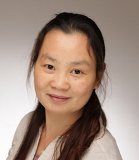
Biography:
Yuling Wang has completed her PhD in March 2009 from Chinese Academy of Sciences, China. After finishing her postdoc work in Purdue University, USA, she obtained an Alexander von-Humboldt Fellowship in German. Currently, she is working as an ARC DECRA fellow in Prof. Matt Trau’s group in Australian Institute for Bioengineering and Nanotechnology (AIBN), the University of Queensland. She has published more than 60 papers in reputed journals with an H-index of 26.
Abstract:
Surface enhanced Raman scattering (SERS) nanotags are a new class of labels for optical detection based on Raman scattering. Central advantages include the tremendous spectral multiplexing capacity for simultaneous target detection due to the narrow width of vibrational Raman bands, the need for only a single laser excitation wavelength to excite the Raman spectra of all SERS nanotags, quantification using the fingerprint intensity of the corresponding SERS nanotags; high photostability and optimal contrast by using red to near-infrared (NIR) excitation in order to minimize the disturbing auto fluorescence of cells and tissues. In this contribution, the innovative platform for rapid and multiple cancer biomarker detection such as epigenetic biomarker (DNA methylation) and protein biomarker (HER2) by using rational designed SERS nanotags will be discussed.
Izhak Haviv
Bar Ilan University, Israel
Title: Robust and comprehensive target sequencing method comparison for the detection of actionable cancer-driver somatic mutations
Time : 12:25-12:50
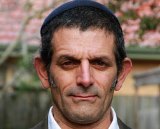
Biography:
Izhak Haviv has completed his PhD at the age of 32 years from Weizmann Institute of Science and Postdoctoral studies from University of California, Berkeley (c/o Tjian lab, Head, HHMI). He is the Director of Cancer Research Center of excellence in the Faculty of Medicine in the Galilee of Bar Ilan University, an academic clinical and translational research organization. He has an Affiliate Position in the University of Melbourne for 11 years and at Peter MacCallum Cancer Centre, Australia for 16 years. He has published more than 59 papers in reputed journals
Abstract:
Somatic mutations emerge as superior biomarkers for rationalized drug selection in combating cancer. To trace the full cancer heterogeneity and detect mutations in cancer cells within DNA preparation that includes neighboring normal stromal cells, multiple target enrichment tools were development to allow sequencing of the most relevant area of the genome at the deepest possible. We assessed seven platforms for sensitivity and specificity over a common genomic area encompassing all frequently mutated exons of over 150 cancer causing genes; Fluidigm® Access Array, Raindance®, Life Technology® AmpliSeq-Ion Torrent, Illumina® TruSeq and Nextera rapid capture and Agilent® HaloPlex and SureSelect (all but the first sequenced on IlluminaMiSeq and HiSeq2500). Although these technologies were relatively comparable and capable of identifying clinically relevant mutations at high level of reproducibility and at least 90% specificity and sensitivity, one method emerged as superior. It had advantage when the cancer cells were a minority of the sample and had unique capability to detect gene fusions. Detecting low frequency mutations is important due to the dynamic selection that occurs when treating with anti-cancer drug. Therefore, we analyzed a number of samples from before and after acquired resistance and indeed found partial evidence to support the hypothesis that resistant cells are present in the onset of treatment. These results suggest that clinically driven tumor sequencing should read the samples at relatively high depth to allow the identification of rare resistant variants and attempt to treat in accordance to their presence in the first line of treatment
Veronica J James
Australian National University, Australia
Title: Highly accurate and much earlier tests for cancer must save lives
Time : 12:50-13:15

Biography:
Veronica J James completed her PhD in Physics from the University of NSW in 1971. Working in crystallography, she published 40 papers on the molecular structures of small organic crystals, before moving into the fi bre diffraction studies of collagen and keratin. In this area she has carried out the diffraction study that produced the successful structure for hard keratin and also pioneered the fi bre diffraction diagnostic tests for breast, colon, prostate cancers and for Alzheimer’s Disease. She was awarded an OAM for her Phones for the Deaf Program and her Advanced Physics Programs in 1996
Abstract:
Fibre Diffraction has far more to offer than diagnostic tests for just breast and prostate cancers. Using hair and nail samples, a test for Alzheimer's Disease shows the presence of this disease before any damage has occurred to the brain, gaining time for treatment. In addition to this, changes have been found using hair and nail samples that specifically diagnose colon cancer, adeno lung cancer and insulin dependent diabetes. For skin samples, melanoma and bowel cancer can also be diagnosed. If more than one cancer is present, changes in the structure for both appear. A study of breast tissue has elucidated the 4 changes in breast tissue surrounding a ductal carcinoma, which precede the cancer itself. Such changes are visible in pathology slides. A study of colon tissue has provided reasons behind the reappearance of such cancers 2 years after removal, more than 50% of such repeat cancers being terminal. Sixty years after the first diffraction pattern was obtained our crystallographic studies have also provided a structure for hair which satisfies all known data. This structure combines sets of helices within helices, the outermost set forming 8 tetramers that give rise to the 7 lattices that define the structure.
- Track 3: Organ-Specific Cancers and Cancer Genetics
Track 4: Anti-Cancer Drug Discovery and Development
Session Introduction
Rupinder Kaur Kanwar
Deakin University, Australia
Title: Survivin targeting by an innate immunity component: Emerging biodrug in the existing void of survivin inhibitors
Time : 14:00-14:25

Biography:
Rupinder K Kanwar completed her PhD from PGIMER, India. Since then she has worked in India, New Zealand and Australia, in a variety of positions supporting and building new research programs related to interdisciplinary research, international collaborations and large-scale initiatives ranging from biomedicine to nanomedicine. She has 15 years’ experience in drug discovery targeting cancer and chronic inflammation, and delivered both academic and industry-oriented research with 75 peer reviewed publications. Dr Kanwar is a key inventor in more than 20 published and live patents/ applications. Her current research focuses on targeting molecular pathogenesis of chronic inflammatory diseases and cancer with nanodrug and nanodiagnostic developments. At Deakin University, she is providing leadership to her research team on deciphering novel molecular targets for protein biodrugs to treat cancer and cardiomyopathy. She serves as an editorial advisory board member and reviewer of several international journals. Dr Kanwar has been invited as a speaker, and chair in national & international conferences, and her research presentations won awards at conferences
Abstract:
Survivin is a 16.5 kDa protein of the inhibitor of apoptosis proteins (IAP) family. It has been detected in almost all types of cancer and is a key target for cancer therapy. The overexpression of survivin in tumors is associated with enhanced tumor cell survival and growth, poor prognosis, drug resistance, radioresistance, angiogenesis and regulating metastasis. Several therapeutic strategies to target the expression and function of survivin at various levels have been employed. However, very few have reached to the clinical trial stage and currently, there is a void for promising clinically safe survivin targeting agents (s). More recently, we have identified bovine milk derived lactoferrin (bLf)’s unprecedented survivin targeting activity both at the gene transcription and protein translational levels. Lactoferrin (Lf) is a naturally occurring iron-binding glycoprotein. It is widely known for its multifunctional nature, and is present in external mammalian excretions including tears, sweat and most importantly milk and colostrum. bLf’s roles in iron homeostasis, organ morphogenesis, and bridging innate and adaptive immune functions, have resulted in its potential applications in the medical field, along with its wide use as a current nutraceutical and a safe food supplement. bLf has a clinically proven safety profile. More importantly, based on animal feeding studies and the success of human clinical trials in cancer patients, bLf has gained significant attention for its potential as a safe anti-cancer chemopreventive and biodrug. Through preclinical studies and clinical trials, we and others have shown that bLf in its native form, and in iron saturated form (Fe-bLf) can not only inhibit tumor development but also reduce growth and metastasis of solid tumors. Earlier, bLf’s anti-cancer activity was reported due to its immunity boosting activities and activation of cancer cell specific apoptotic mechanisms, through the modulation of both the extrinsic and intrinsic pathways. The capacity of safe and non-toxic bLf to target survivin expression and modulation of cancer cell growth and apoptosis highlights an exciting potential for bLf as a much needed anti-survivin biodrug. The novel findings of the study with promising results on anti-cancer efficacy will be presented in the meeting.
Juliana antonipillai
Victoria University, Australia
Title: Inhibition of LIM kinase inhibits cancer growth
Time : 14:25-14:50

Biography:
Juliana Antonipillai is a lecturer in the College of Health & Biomedicine. She specialises in cancer and cardiovascular biology. Prior to joining Victoria University, Juliana was an academic researcher for 12 years at several medical research institutes and hospitals in Melbourne and the USA. In the last five years her research has focused mainly on how LIMK regulates platelet function in humans and mice, and on the role of LIMK in cancer metastasis, using a variety of small molecule LIMK inhibitors. She demonstrated that these inhibitors inhibit the proliferation of human breast cancer cells in 2D and 3D cultures. She also contributed to a collaborative study showing the effect of a new LIMK inhibitor drug, Pyr1, on cancer cell growth in vitro and in mice.
Abstract:
LIM kinase (LIMK) regulates actin cytoskeleton via inactivation of an actin depolymerising factor cofilin and involves in cell motility, invasion and migration. Metastasis is the major cause of death in cancer patient and the factors that regulate migration and invasion considered to be a good therapeutic target for metastatic disease. We investigated the consequences of LIMK inhibition on growth and metastasis of humans and mouse cell lines and tissues with number of LIMK inhibitors. LIMK activity was reduced in tumor cells by expression of dominant-negative LIMK1 by RNA interference or with a selective LIMK inhibitor. The extent of phosphorylation of the LIMK substrate, cofilin of proliferation and invasion in 2D and 3D culture and of tumor growth and metastasis in mice were tested. Inhibition of LIMK activity efficiently reduced the pro-invasive properties of tumor cells in vitro. Tumors expressing dominant-negative LIMK1 grew more slowly and were less metastatic in mice. Our findings with number of cell permeable LIMK specific inhibitors and SiRNA suggest that LIM kinase functions as a signaling node that controls actin dynamics. LIM kinase may therefore represent a targetable enzyme for cancer treatment.
Selina Sutton
University of New South Wales, Australia
Title: Identification of a novel compound that synergistically inhibits cell growth with BRAF inhibitor in BRAF wild type and NRAS mutant melanoma cells
Time : 14:50-15:15

Biography:
Selina Sutton completed her PhD at the University of New South Wales in Sydney, Australia. Presently, she is a Post-doctoral researcher at the Children’s Cancer Institute. She has presented her research at numerous conferences including an oral presentation at the annual Paris Melanoma Conference in 2014. She is interested in discussing research collaboration.
Abstract:
The discovery of BRAF inhibitors has revolutionized therapy for the 50% of patients with BRAFV600 mutant melanoma however BRAFWT melanomas have few effective therapies. The oncogene NRAS is activated by mutation in 15-20% of melanomas and has limited therapeutic options. Among 24 hit compounds from our recent drug screen for small molecules that enhanced the cytopathic effects of histone deacetylase inhibitors, we identified compound 012 (C-12) which unexpectedly had significant single agent activity on melanoma cell viability with limited toxicity against normal human fibroblasts. Importantly, when combined with the BRAFV600 inhibitor, vemurafenib, C-12 synergistically increased vemurafenib potency in 5 of 6 BRAFWT melanoma cell lines (Combination Index: CI<1) and dramatically reduced colony forming ability (P<0.0001). Mechanistically, combination vemurafenib+C-12 markedly increased a growth suppressor, tripartite motif (TRIM) 16 protein level and knockdown of TRIM16 in melanoma cells significantly reduced vemurafenib+C-12 induced growth inhibition suggesting that the combination exerted synergistic anti-cancer effects by inducing TRIM16 expression resulting in consequent growth arrest. Microarray analysis revealed an increase in cholesterol biosynthesis suggestive of a response to decreased intracellular cholesterol with combination treatment. Synergy studies between cholesterol inhibitors, lovastatin & U18666A and vemurafenib revealed significant synergy preferentially targeting BRAFWT melanoma in like manner to C-12. Taken together, we have identified a novel compound which works synergistically with BRAF inhibitor as an anti-cholesterol drug and specifically targets BRAFWT melanoma cells. We have further shown that statins combined with vemurafenib have significant anti-tumour activity in BRAFWT melanomas, suggesting a novel therapeutic approach.
Ram Kumar Singh
Advanced Centre for Treatment Research and Education in Cancer, India
Title: IGF-1R: A key linker between chemoresistance and cancer stem cells in epithelial ovarian cancer cells
Time : 15:15-15:40

Biography:
Ram Kumar Singh has completed his masters in life sciences with distinction. He qualified national level exams GATE and CSIR-UGC NET and availed five years scholarship to pursue his Ph.D. Currently he is at the verge of completion of Ph.D. In his entire tenure of Ph.D. programme he has published in high impact peer reviewed journals: one first author paper in Cancer Letters, and two co-author papers in IJBCB and CELL, one book chapter in Engineering in Translational Medicine (Springer publication). He has also presented his work in various national and international conferences
Abstract:
Generation of chemoresistance and tumor relapse is major therapeutic barriers for successful treatment of ovarian cancer. According to the current notion, a small population of cells (Cancer Stem Cells or CSCs) residing in the tumor bulk aids in drug resistance and tumor relapse. To understand these associations, we developed several drug resistant models against cisplatin, paclitaxel and cisplatin + paclitaxel using A2780 cell line and further classified them into early resistant and late resistant stages. We have previously shown that these early resistant cells possessed high levels of Insulin like Growth Factor 1-Receptor (IGF-1R) expression and Picropodophylin (PPP), an IGF-1R inhibitor potentiated maximal reversal of resistance at early stages (Singh et al, 2014, Cancer Letters). In the present study, an enrichment of CSC like phenotype (biomarker-CD44 & CD133, self-renewal, and Side Population/SP) was observed with gradual increase in resistance. Expression of Oct4, Sox2 and Nanog increased from sensitive to early stage of resistance, which further remained constant at late resistant stages. Non-invasive bioluminescence imaging revealed that SP cells isolated from early resistant stages possessed higher tumorigenic potential than SP cells isolated from the late resistant stages. Interestingly, inhibition of IGF-1R with PPP abrogated the expression of stemness genes and spheroid formation. However silencing of Oct4 and Sox2 did not affect IGF-1R expression indicating IGF-1R as an upstream regulator of these stemness genes. Thus our present data suggests that IGF-1R is a key molecule that governs the cross talk between cancer stem cells and acquired chemoresistance in epithelial ovarian cancer.
Chia-Ning Shen
Academia Sinica, Taiwan
Title: Activated glucocorticoid signaling promotes acinar-to-ductal metaplasia and KrasG12D-driven tumorigenesis in pancreas
Time : 15:40-16:05

Biography:
Chia-Ning Shen received his PhD degree in 2002 from the Department of Biology & Biochemistry, University of Bath , United Kingdom. And then, from 2002-2004, Dr. Shen had his postdoctoral training at the Center of Regenerative Medicine, University of Bath, United Kingdom. Since 2004, Dr. Shen joint the Genomics Research Center of Academia Sinica. Dr. Shen is now an Associate Research Fellow and Deputy Director at Genomics Research Center of Academia Sinica, Taipei, Taiwan. He is also serving as Adjunct Associate Professor at National Yang-Ming University, Taipei, Taiwan
Abstract:
Acinar-to-ductal metaplasia (ADM), an inflammatory lesion associated with replacement of acinar cells by tubular complexes is thought to represent a condition with increased risk of neoplasia. However, the direct evidence linking acinar-to-ductal metaplasia and development of pancreatic neoplasm is still lacking. Glucocorticoid-mediated signaling pathway is known to be a part of the feedback control machinery of immune system that acts to suppress excessive immune activity. In the present study, we explored the role of GR in development of ADM and pancreatic intraepithelial neoplasia (PanIN) in mice with pancreatitis. We initially identified that evaluated levels of activated glucocorticoid receptors (GR) were observed in patients of chronic pancreatitis and pancreatic ductal adeno carcinomas (PDAC). Utilizing mice conditionally expressed KrasG12D in acinar cell with or without loss of GR, we demonstrated that GR activation was required for generation of metaplastic ductal lesion and development of pancreatic intraepithelial neoplasia (PanIN) in mice with experimental pancreatitis. Administration of dexamethasone,a potent synthetic glucocorticoid was sufficient to induce development of PanINs and PDACs in KrasG12D mice that harbored single-allele deletion of p53. We further revealed that non-genomic activation of GR was a key action that led to evaluate c-Src signaling and trigger a pathological threshold of Ras activity necessary for neoplastic transformation. In contrast, treatment of dasatinib, a Src kinase inhibitor suppressed development of PanINs and PDACs induced by dexamethasone. Importantly, Cre-lox based lineage-tracing mice was applied and identified that GR activation directly transformed GFP-tagged KrasG12D-expressing acinar cells to tumorigenic cells. The findings explained why inflammatory ductal reprogramming predisposes to development of pancreatic neoplasm.

